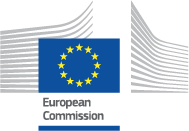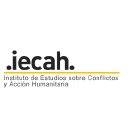WORKING WITH DG ECHO AS A UN AGENCY | 2014 - 2020
3. NEEDS ASSESSMENT AND BENEFICIARIES
1. General information
2. Humanitarian organisation in the area
3. Needs assessment and beneficiaries
4. Logic of intervention
5. Quality markers
6. Implementation
7. Coordination
8. Monitoring and evaluation
9. Visibility
10. Financial overview of the action
11. Request for derogation
12. Administrative information
13. Conclusions and humanitarian organisation’s comments
Logframe Overview
3.1 NEEDS AND RISKS ANALYSIS
3.1.1. Date(s) of assessment
The partner must provide the date(s) of the most recent needs assessment.
3.1.2 Assessment methodology
The partner must provide details on the assessment methodology used. In particular, it will explain:
-
briefly by whom, how and in which conditions the most recent assessment/s was/were carried out
-
whether it was a joint/coordinated assessment, and whether it was shared with other agencies
-
whether the assessment used direct or indirect sources of information (primary or secondary data) and whether the information could be confirmed by a field visit.
In addition, in order for ECHO to assess whether certain specific sources/tools of information are pertinent and frequently used, the partner should indicate which tools/sources were used, for instance IPC (Integrated Food Security Phase Classification), MIRA (Multi-Cluster Initial Rapid Assessment), UNDAC (UN Disaster Assessment and Coordination), ACAPS (Assessment Capacities Projects).
In the adapted Single Form, this section is optional.
3.1.3 Problem, needs and risks analysis
The partner must describe the main problems and needs identified by the needs assessment within the geographical area and sectors concerned by the proposed Action, establishing cause/effect relations.
The partner will also pay attention to:
-
explain how the problem analysis is in line with ECHO analysis and strategy for the country;
-
provide a brief gender and age analysis, including an assessment of the roles of different gender and age groups and their control over resources, issues of inequality or discrimination, including the level of access to humanitarian assistance, the effects of the crisis on different gender and age groups, their specific needs and their capacities for coping with, responding to, recovering from and preparing for crises. If the context does not permit or if the information is not available, the partner will mention it;
-
include in the analysis relevant cross-cutting issues (e.g. natural hazard, DRR, protection), especially when those issues are highlighted in the funding decision/HIP;
-
explain what are the underlying risk factors linked to the humanitarian crisis; what is the likelihood of large increases in humanitarian needs due to a conflict, natural disaster, epidemics, etc.; what are the foreseen trends; what potential negative effects/risks could different gender and age groups be exposed to. Risks relating to the implementation of the Action will be explained in section 4.6.
3.1.4 Response analysis
The partner must outline its strategy to address the identified problems and briefly explain why other responses were not chosen. The partner will also explain how the proposed response addresses the specific needs of the affected persons. The partner should also stress in this section how the proposed response is coherent with the priorities defined in the ECHO's funding decision/HIP.
NB: In support to the explanation provided in sections 3.1.2, 3.1.3 and 3.1.4, the partner can provide in annex a copy of the assessment report. However, information provided in the sections above has to be sufficiently self-explanatory.
3.1.5 Previous evaluation or lessons learned exercise relevant for this Action
This section is optional and applies in cases of follow-up actions. It is an opportunity to information to ECHO about the partner’s capacity to build on lessons and to take action to overcome past problems, if any. The partner will have the possibility in section 3.1.5.1 to briefly present the conclusions of previous evaluations/lessons learned particularly relevant to the Action.
NB: In support to the explanation provided in section 3.1.5, the partner can provide in annex a copy of the previous evaluation reports.
3.2 BENEFICIARIES
3.2.1 Estimated total number of direct beneficiaries targeted by the action
The partner must provide an estimation of the number of beneficiaries who will receive the assistance or who will benefit directly from the Action, within the timeframe of the Action.
These numbers can represent either as individuals and/or organisations or both. The term Organisation does not necessarily imply that there is a legal entity (for example disaster management committee in a village). The numbers mentioned here may not necessarily match the sum of individuals mentioned in section 4 (results) as one beneficiary can benefit from several results.
3.2.2. Estimated disaggregated data about direct beneficiaries
When known, the partner has to provide estimated percentages of female and male beneficiaries in different age groups as this is relevant for identifying the different needs of women and men, be they children, adults or older persons.
This section only applies to individuals. Recognising that detailed disaggregation is difficult at initial stage, the partner can use global figures and reasonable estimates. The partner may explain the absence of data in section 3.2.6.
The total of the first column should not necessarily sum-up to 100 % as information might not be available for all age categories (partners may have estimates for age groups that are different from those mentioned below). However, the total of female and male should be equal to 100%.
3.2.3 Does the action specifically target certain groups or vulnerabilities?
This section allows ECHO to identify whether the proposed Action as a whole specifically targets certain groups of vulnerabilities and to assess whether this corresponds to the findings of the needs assessment.
If the whole action exclusively target one or a few specific groups, the partner will be asked to identify those groups by clicking on the corresponding groups in section 3.2.3.1. (Infants and young children/ Children/ Elderly/ Pregnant Lactating women/ Disabled/ Male/ Female) It is possible to select several groups, but not all. If only few results target certain groups, then the target should be mentioned under the corresponding results in section 4.
3.2.4 Beneficiaries: what are the selection criteria
This section will allow ECHO to assess whether the selection and identification of beneficiaries are pertinent, in particular whether they belong to the most vulnerable groups. The partner has to briefly explain how the direct beneficiaries were targeted, identified and selected.
3.2.5 Beneficiaries: what is the involvement of beneficiaries in the action?
This section is particularly important to assess how the accountability to beneficiaries is concretely implemented. The partner must explain how and by what means the beneficiaries were involved in the design of the Action. The partner will briefly explain the mechanisms put in place to ensure participation of the affected populations in the identification of needs, the design of the Action and further on in the implementation and evaluation of the Action. When relevant, the partner will indicate whether the relevant gender and age groups adequately participated in the design of the Action. In exceptional cases, when it was not possible to involve the beneficiaries, the partner has to explain why.
3.2.6 Beneficiaries: more details on beneficiaries
In this section, the partner can provide additional information when needed on the specificities of direct or potential indirect beneficiaries. In cases where the partner is unable to provide figures in section 3.2.2 (Disaggregated data), it will give a short explanation here.






